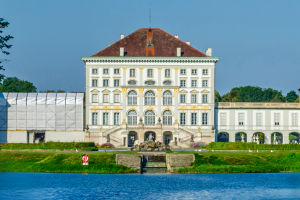Lykkers, looking to uncover the charm of Munich? Whether it’s the cobblestone streets or the lush parks, one question lingers—where should you stay?
With vibrant neighborhoods, each with its unique character, finding the ideal place can truly elevate the travel experience. The following guide explores the best areas in this Bavarian gem, ensuring an unforgettable visit.
Altstadt-Lehel
The heart of Munich, Altstadt-Lehel, places iconic sites like Marienplatz, the Glockenspiel, and the Residenz within walking reach. Hotels here range from boutique to mid-tier; for example, Hotel MIO offers modern rooms starting around $180 per night and sits steps from shopping streets and museums.
Staying here means daily access to pedestrian-friendly lanes, hourly historical performances at the town hall, and quick connections—U-Bahn lines U3/U6 at Marienplatz connect across the city in under 15 minutes. Early morning strolls avoid crowds, while evening lights on the cathedral reflect off cobblestones.
Glockenbachviertel
Glockenbachviertel pulses with creative energy—street-level galleries, independent designers, and cafés lining Müllerstraße. Accommodation like Flushing Meadows Hotel channels that spirit with artist-curated rooms and rooftop outlooks, with rates starting around $150 per night in shoulder season.
The neighborhood is a 10–15 minute walk from central sights, and tram 18 or U-Bahn at Sendlinger Tor drops visitors nearby in under 5 minutes. Evening walks reveal pop-up markets and small dessert shops; weekend brunches here run about $20 per person, with fresh pastries and specialty coffees.
Haidhausen
Across the river, Haidhausen feels quieter, with tree-lined squares and soft pastel facades—earning it the nickname “Munich’s French Quarter.” Motel One München offers well-designed rooms from $110 per night, blending affordability with proximity to the Isar River and cultural venues like Gasteig (home to concerts and exhibitions).
Walks along the river in the early morning are popular with locals, and the neighborhood’s small bakeries serve breakfast sandwiches for $6. Tram lines 15 and 25 link Haidhausen to Marienplatz in about 10 minutes; evening promenades around Weißenburger Platz invite relaxed conversation.
Schwabing
Schwabing mixes youthful flair with longstanding artistic tradition, anchored by the vast English Garden just beyond its northern edge. Andaz Munich Schwabinger Tor sits at the crossroads of design and comfort, offering elevated rooms from $250 per night and a rooftop viewpoint over the neighborhood. Leopoldstraße, the main boulevard, bustles with cafés selling hearty Bavarian specialties like pretzel baskets with regional cheese dips for $12.
Street-level shops showcase local crafts, and nighttime ambient street music spills out from cafés. Tram lines 23 and 27 along with U-Bahn U3 make Schwabing a 15-minute ride from the central station.
Booking
Munich draws high visitor volume, especially during festivals and summer. Securing rooms 3–4 months in advance usually locks in better rates and preferred neighborhoods. Price ranges shift: budget travelers can find clean private rooms in Altstadt-Lehel or Haidhausen from $120 when booked early, while peak-season spikes can push those same rooms above $220.
Public transport passes simplify exploration—a single-day inner-zone MVV ticket costs about $11, covering U-Bahn, S-Bahn, tram, and bus rides. Multi-day visitor cards (48-hour or 72-hour) offer modest savings and convenience for exploring beyond the base area.
Transport Ease
All four areas sit within Munich’s tight transit web. Marienplatz and Sendlinger Tor serve as transfer hubs; from there, connections to the airport via S1/S8 trains take roughly 40 minutes for about $12. Rental bikes are widespread, with hourly rates around $6, encouraging short inner-city hops.
For day trips—such as to the fairy-tale Neuschwanstein Castle—organized shuttles depart from central Munich for $90–$110, including guided transport and regional entry coordination, with total day-trip duration around 10–12 hours.
Local Flavor
Beyond lodging, each district offers edible details. Altstadt-Lehel hosts street vendors selling roasted nuts and pretzel twists for $3. Glockenbachviertel invites sample-style breakfasts with local cheeses, honey, and fresh bread for $15, while Haidhausen’s cafés are known for layered almond cakes and espresso blends at $4. Schwabing provides daytime food markets where small plates of grilled vegetables and regional salads cost about $8, offering a lighter alternative to heavy fare.
Beyond Munich
A short train ride from central stations opens regional surprises. The nearby castle tours to Neuschwanstein—accessible via day excursions—can be paired with a morning in Schwabing or a quiet pre-departure coffee in Haidhausen.
Seasonal markets, like the late autumn craft fairs, populate public squares in Altstadt-Lehel and provide opportunities to pick up handmade gifts from $25 onward. Combining a base in one of the four neighborhoods with strategic day trips maximizes the stay without excessive transit fatigue.
Conclusion
Selecting where to stay in Munich shapes the pace, palette, and personality of a visit. Altstadt-Lehel delivers history at footsteps, Glockenbachviertel fuels creative energy, Haidhausen offers calm charm, and Schwabing balances culture with green escape. With clear cost ranges, transit passes, and timing tips, the decision becomes an inviting part of planning.
Which neighborhood will set the tone for the next Munich memory?

